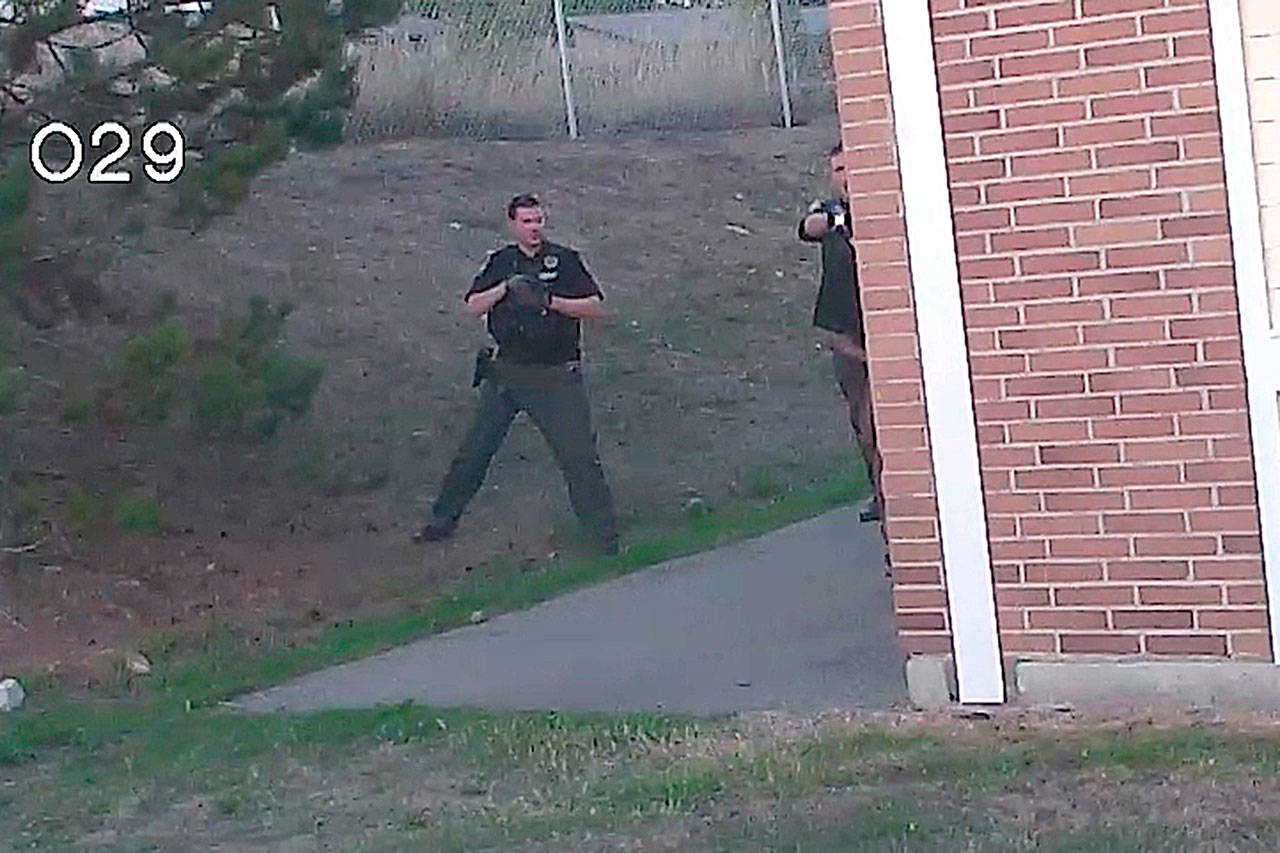A lengthy investigation into a police-involved shooting that left an Oak Harbor man dead Sept. 23 offers few clues as to what caused him to start an unprovoked fight, attempt a carjacking, steal bullets at Walmart and then stare down police on school property.
Island County Prosecutor Greg Banks received the final investigative report on the case Monday and released a memorandum explaining what happened and why the deputy was justified in firing the shots that killed Richard J. Jackson, 36.
“In this case, the undisputed facts that were provided by law enforcement and civilian witnesses alike justify the use of deadly force against Mr. Jackson,” Banks wrote. “Although Mr. Jackson’s motivations were unknown, his actions, which were known to the officers who surrounded him, were objectively purposeful, and gave officers probable cause to believe he ‘posed a threat of serious harm’ to others.”
The report describes the moments leading up to shooting in second-by-second detail based on video from a police car. He writes that Jackson was surrounded by three officers but refused to comply with their instructions. As he reached into a pocket, an Oak Harbor police officer discharged a Taser, striking Jackson, and Deputy Shawn Engert with the Island County Sheriff’s Office fired shots a fraction of a second later.
Jackson was shot five times and later died at the hospital. A knife was found in his pocket.
It’s unknown what sparked Jackson’s sudden violence that day. Toxicology results showed Jackson had no drugs in his system and his blood-alcohol level was below .08 percent, the state’s limit for driving.
Banks writes that it appears the actions taken by Engert meet the standard for using necessary force under the circumstances.
According to the investigation, on the day of the shooting Jackson visited acquaintances in Oak Harbor and got into a fight. Witnesses said he was agitated and attacked another man without provocation. A man defended himself by hitting Jackson on the head with a pair of vice grip pliers, causing Jackson to bleed profusely as he fled.
Bloody and disheveled, Jackson tried to get into a minivan that was stopped at the intersection of Highway 20 and Erie Street, but the driver locked the door and drove off. The driver called 911, followed Jackson and alerted the dispatcher as he saw him enter Walmart.
Officers arrived shortly afterward and spoke to employees who said Jackson brandished a knife at an employee at the gun counter and stole two boxes of ammunition. He left through an employee-only door.
As officers searched for Jackson, a pedestrian flagged down an officer to report seeing a man with a bloody face near Oak Harbor Intermediate School’s soccer fields.
Oak Harbor police officer Patrick Horn was first to arrive. He came upon Jackson, drew his gun and told him to get down on the ground. Jackson did not comply, but stood with “a thousand yard stare,” Horn told investigators.
Engert arrived, drew his gun and positioned himself near Horn, who holstered his gun and drew his Taser. At nearly the same time, Oak Harbor officer Mike Brown arrived and Jackson turned toward him, his back to the other officers.
Much of the incident was recorded by the video camera in Brown’s car.
The officers commanded Jackson to go to the ground and not to put his hands in his pocket. Horn told him he would Tase him if he put his hands in his pocket.
Jackson, with his back to Engert and Horn, reached into his right pants pocket.
Nearly simultaneously, Engert and Horn put their arms out in shooting positions. Horn discharged the Taser, which struck Jackson. Engert started firing a third of a second later; he shoots five times in about one second, striking Jackson in the back with all the shots.
Brown rushed to Jackson’s aid. EMTs arrived and found a knife with a 4-inch blade in Jackson’s pants pocket.
Toxicology results show Jackson’s blood-alcohol level was 0.052, below the legal driving limit of 0.08. No drugs were present in his system. The prosecutor noted Jackson received blood transfusions, which could have affected the testing.
The shooting was investigated by the Skagit County Multi-Agency Response Team. The detectives contacted 77 potential witnesses, conducted 18 formal interviews and reviewed video from several sources.



